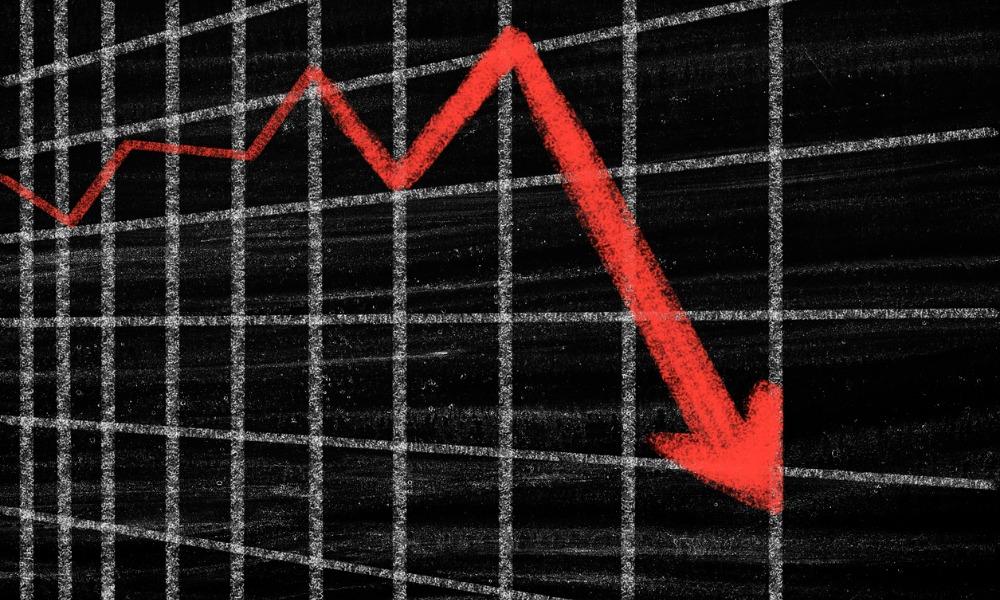Mortgage lending in slump as homebuying "simply unaffordable"

Refinance lending fell 36% during the second quarter of this year, according to the latest report by real estate data provider, ATTOM.
The US Residential Property Mortgage Origination report shows that mortgage origination was down 13% from Q1 this year (2.39 million mortgages), representing the biggest annual drop since 2014.
Reflecting a year-long decline and the fifth quarterly decrease in a row, it was down 40% compared with the same period last year, while the dollar volume of refis was also down 56% annually to $310.1 billion.
The decline was attributed mostly to another double-digit downturn in refinance activity due to mortgage rate rises, which more than outweighed increases in home-purchase and home-equity lending, ATTOM said.
To compile the report, ATTOM recorded mortgage and deed of trust data for single-family homes, condos, town homes and multi-family properties of two to four units.
Read more: Zombie properties rise
The report said: “For the first time since early 2019, refinance activity in the second quarter did not represent the largest chunk of mortgages, dropping to 39% of all loans. That was off from 53% in the first quarter and from a recent peak of 66% in early 2021.”
Rick Sharga, executive vice president of market intelligence at ATTOM, blamed soaring mortgage rates for the slump in refi loan volume, adding that it was having a knock-on effect on purchase loans.
He said: “Mortgage rates that have virtually doubled over the past year have decimated the refinance market and are starting to take a toll on purchase lending as well.
“The combination of much higher mortgage rates and rising home prices has made the notion of homebuying simply unaffordable for many prospective buyers, which threatens to drive loan volume down even further as we exit the spring and summer months.”
The downturn in total activity resulted from just 941,000 residential loans getting rolled over into new mortgages during Q2 - a figure that was down 36% from Q1 and 60% compared with the same period last year.
In total, lenders issued just under $808 billion worth of mortgages in Q2. That was down quarterly by 11% and annually by 35%. As with the number of loans, it was the biggest annual decrease in the dollar volume of loans in eight years.
Meanwhile, purchase loan activity increased slightly by 8% to 1.1 billion, representing 46% of all borrowing and reflecting the seasonal upswing of the Spring home-buying season, the report noted.
Read more: New home sales "disappointing" in July
However, the report stressed that the gain was “unusually small for the months running from April through June” as it represented an annual drop of 21%.
The dollar volume of loans taken out to buy residential properties rose to $431.4 billion which, although up 15% from Q1, was also down 12% compared with the second quarter of last year.
The report highlighted home-equity lending as the best-performing category by far during the second quarter, with Home Equity Lines of Credit (HELOC) jumping 35% quarterly and 44% annually to 341,704.
The largest increases in HELOC mortgage originations in metro areas with a population of at least one million were in Fresno, California (up 82.9%); Riverside, CA (up 80.9%); and Buffalo, New York (up 53.2%).
Regarding this aspect, Sharga said: “Borrowers looking to tap into their equity should know that HELOC activity has been particularly strong among credit unions and community banks, along with a small but growing number of depository banks.”
However, he added that non-bank mortgage lenders were not likely to be active participants in the HELOC market, even though they had started “to more aggressively originate home equity loans”.
In other developments, mortgages backed by the Federal Housing Administration (FHA) increased as a portion of all lending for the third straight quarter, accounting for 10.7% of all residential property loans originated in Q2, while residential loans backed by the US Department of Veterans Affairs (VA) accounted for 5.1% of the total for the same period - down from 5.6% in the previous quarter and 6.8% annually.
The report concluded that the latest loan trends “reflected a housing market in flux, pushed by competing forces, and continued a sharp break from a period when lending activity nearly tripled from early 2019 through early 2021”.



